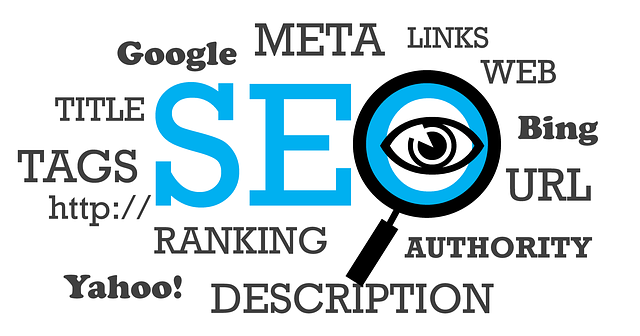Traffic Methods
You have free traffic, mainly from search engines and social media sites, and then you have paid traffic, I’ll just mention a few of them.
Facebook ads, Youtube ads, Google ads, Bing ads are probably the most well known paid traffic sources on the internet, and you can get all the traffic you need from them if you have enough money.
The challenge with paid traffic is to get a positive ROI (return of investment)
If you pay $500 for x amount of clicks and it only generates $400 in sales, then it will not do much good for your business.
Combining Free and Paid Traffic is Very Powerful
Paid traffic can be profitable if you use it the right way. When your blog starts to get some traffic, you also get some valuable data you can use for your paid ad campaigns.
If you just send paid traffic to all your offers, you’ll not generate a positive ROI in the long run, I can almost guarantee that, so pay attention, I’ll tell you how to be profitable.
You have to use a tracking tool for your blog like Google Analytics (it’s free) then you can see the behavior of the visitors on your blog.
When you can see you have an offer that gets more attention than others, more clicks, maybe a few sales, then it’s time to set up a small paid ad campaign for that offer, just $10-15 to start with to test things.
If it still looks good, then we scale up. It’s the beauty of paid traffic, you can scale it, you can get exactly the amount of traffic you need if you have the money, it’s not the case with free traffic. You can’t push free traffic, you get the traffic you get.
But when we combine free and paid traffic the way I’ve just laid out, we’ve transformed our “hobby blog” into a small business.
I hope you can see that if you use this tactic you don’t need a lot of free traffic before you’re “in business” because the main purpose of your free traffic is to provide some data for your paid ad campaigns.
But first we need that free traffic, and how do we get that?
How to Get More Traffic to a Blog for Free
If you have a huge amount of followers on social media sites like Pinterest and Instagram, it would be a great place to promote your blog, it could generate a lot of traffic.
But the easiest way to get free traffic is SEO (search engine optimization)
Yes I know you’ve probably been told by some marketers that SEO is to competitive and takes to long to kick in (it’s often people who’re trying to sell some traffic software)
I’ll show you how easy it is to optimize a blog post for SEO, it’s not rocket science, we will use this blog post as a case study.
Choosing a keyword or keyword phrase for your blog post
It’s by far the most important step for your blog post, when that’s done, you’ve completed 75% of the SEO tasks for the article.
That’s why a keyword research tool is the only must have tool when you’re a blogger, I’m using Jaaxy, but we’ll get back to keyword tools later.
I typed in different keywords and phrases when I looked for a keyword for this blog post and I ended up with this one.

Avg=average searches/mo
Traffic= traffic generated from the keyword phrase
QSR=competing websites trying to rank for this keyword phrase (less than 100 is good)
KQI= keyword quality index
SEO=0 is worthless, 100 is best
A lot of bloggers make the mistake to try to rank for keywords that generates a huge amount of traffic, but they don’t look at the competition.
You can be sure if the keyword generates traffic counted in thousands, you’ll be competing against the big players and you’ll probably never rank at all.
I chose “how to get more traffic to a blog” as the keyword phrase for this blog post, I know 103 visitors/mo doesn’t seem like much, but there’s almost no competition so it’s really a low hanging fruit.
Success with a blog is a marathon and not a sprint.
It’s fine if I can get 60 visitors/month from this article, when I have 100 posts like this one, it’s 6000 visitors/month and it adds up every time I publish a new post, and the traffic will keep coming for years (unlike paid traffic)
Keyword Density
Keywords are an important factor when you try to optimize your blog post for search engines, but it can also hurt you if you overdo it.
If you use your keyword to many times and not in a natural way, it’s called keyword stuffing, search engines will penalize you for that, and then your keyword will do you more harm than good.
But how often should it be used then?
There is no one-size-fits-all optimal ‘keyword density’ percentage anybody has ever demonstrated had direct positive ranking improvement in a public arena.
I certainly do not believe there is a particular percent of keywords in words of text to get a page to number 1 in Google.
While the key to success in many niches is often simple SEO, search engines are not that easy to fool in 2019.
There may not be a perfect % for you to aim for – but I do think you run the risk of tripping keyword stuffing penalty filters if you, for instance, were to keyword stuff a page and every element on it with your focus terms.
I write natural page copy which is always focused on the key phrases and related key phrases. I never calculate density in order to identify the best % – there are way too many other things to work on. I have looked at this, a long time ago. If it looks natural, it’s ok with me.
Normally I will try and get related terms on the page and I might have the keywords I am focused on in just a few elements and on the page text.
Source:https://www.hobo-web.co.uk/
Some Simple Rules to Follow
Rule no. 1 Write for your readers and not the search engines.
When you’ve chosen the keyword for your blog post, then forget about SEO for a moment and write the best article you possibly can for the reader you have in mind.
When you’ve done that, you can try to fit your blog post into some sort of “SEO template” because we want both our readers and the search engines to love our blog post, don’t we?
When you format your blog post follow these rules (don’t ask me why)
Your headline is automatically a H1 paragraph, don’t use it again. Your keyword should appear here.
Use H2 paragraph for your first sub-headline
Use H3 paragraph for the remaining sub-headlines (recommended)
Never have more than 300 words between your sub-headlines.
Your keyword should also appear in one of your sub-headlines.
Your keyword should appear in the meta description.
Your keyword should appear in the featured image.
Always have an outgoing link to an authoritative website
Try to link to one of your other articles on your website (internal link) but only if you have some similar content.
The Yoast SEO plugin will make it very easy to follow these steps if you install it on your website, it will give a score for both SEO and readability. (see below)


It’s SEO and readabilty score from one of my older blog posts. Try to get as many green dots as possible.
The Only Tool You Can’t do Without
As I’ve mentioned before a keyword research tool is a must have if you’re a serious blogger.
If you want that free traffic from search engines, you must get your blog post to appear on the first page when people type your keyword in the search box, that’s when the traffic will really kick in.
Not all your blog posts will get there, not even with a good keyword research tool, but to at least give your post a chance, you need this tool.
There are some free keyword tools on the market, but their traffic numbers isn’t reliable, and they lack an important feature…they don’t show the Competition for the keyword.
There’s only one free keyword tool I would recommend and it’s Ubersuggest, I’ve used this tool in the past, but I’ve found the traffic numbers not to be super reliable.
There are some great paid keyword research tools, but most of them aren’t cheap.
See pricing for Ahref Keyword Explorer

I use Jaaxy as my keyword research tool, it’s simple to use without any unnecessary bells and whistles, but it gives me the data I’m looking for, the traffic data is very reliable, and it’s a lot cheaper solution.
In fact, I don’t pay for Jaaxy because I’m a member of a blogging university, and Jaaxy is included in this membership.
The Words Are Written
Now we only need to do one more thing before we can press the publish button and it’s to write the meta description.

Always include the keyword phrase in the meta description and the description should be between 152 and 160 characters.
That’s it folks, no more SEO for this blog post. Now I’ll just add a featured image and then…publish
Conclusion
Some may think it looks complicated and overwhelming, but believe me, it isn’t. Use this article as a blueprint for two or three blog posts, after that it will be a piece of cake and won’t take you long.
Don’t overthink it, some bloggers get obsessed with the SEO process and spend countless hours trying to find the golden technique that can guarantee them a spot on page 1, don’t do that, simple basic SEO is the way to go.
Remember rule number 1, Write for your readers and not the search engines. Your readers want content that’s full of personality, opinions and life, if you give them that, you’ll be rewarded, SEO is only to give you that extra edge.
I hope you got some value from this post and I’ll end by wishing you good luck with your blog and hopefully see you on page 1 soon.
May the force be with you
Stefan




